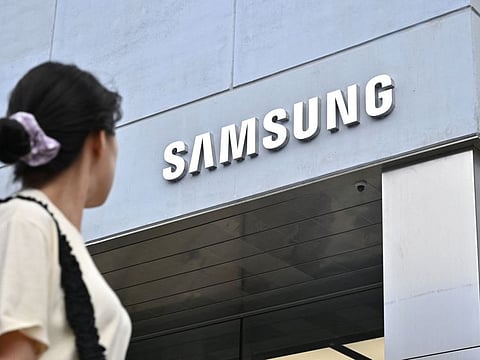Samsung sales fall most in over a decade as chip slump persists
Samsung has borne the brunt of a slowdown gripping the $160 billion global memory industry

Seoul: Samsung Electronics reported its worst decline in quarterly revenue since at least 2009, stoking uncertainty over when a year-long electronics and memory chip demand slump will end.
The stock slid 2 per cent in Seoul, the most on an intraday basis in more than two months, after Samsung reported a larger-than-anticipated 22 per cent decline in sales to 60 trillion won ($46 billion). Operating profit plunged 96 per cent in the three months ended June, though at 600 billion won that surpassed average estimates.
Samsung has borne the brunt of a slowdown gripping the $160 billion global memory industry, reflecting a wider downturn after a Covid-era boom in online activity waned. Inflation and recession fears last year triggered a rapid pullback on consumer and business spending that’s since hammered sales of electronics worldwide.
Despite the disappointing top line number, investors remain cautiously optimistic that the memory chip glut is finally easing after more than a year of price declines. Samsung rivals Micron Technology and SK Hynix have signaled that electronics firms are working through bloated stores of memory chips after the post-pandemic collapse in demand for smartphones and computers.
The industry has moved to shore up prices. Samsung said in April it’s cutting production after reporting its slimmest profit in 14 years, a significant step towards ending the supply glut. Micron said last week it’s passed the low point of the current downturn, while Hynix executives predicted some relief later this year, aided by a recovery in China and AI demand.
Last quarter was “the profit bottom for Samsung in the current memory down cycle,” CLSA analyst Sanjeev Rana said. “We expect a sharp profit recovery in the second-half as memory price declines are decelerating and demand is expected to recover.”
The country’s largest corporation will provide a business outlook when it reports full earnings - including net income and details on divisional performance - on July 27.
The company also unveiled a plan last week to shore up its foundry business in a bid to narrow the lead held by Taiwan Semiconductor Manufacturing Co. Samsung will introduce 2-nanometer production for mobile phone parts by 2025 and expand applications. It’ll also significantly increase output in Pyeongtaek, South Korea, and Taylor, Texas.
While the glut may be easing, inventory levels throughout the industry remain historically high and the economic outlook is uncertain. But investors are betting generative AI will drive new demand for servers requiring next-generation DRAM, or DDR5. AI-enabling servers need at least four to six times more DRAM capacity compared to standard ones according to the Goldman Sachs report.
Samsung is also grappling with a prolonged slump in the smartphone market. Its mobile shipments are estimated to have fallen a quarterly 9 per cent in April-June, according to eBest Investment
Sign up for the Daily Briefing
Get the latest news and updates straight to your inbox


